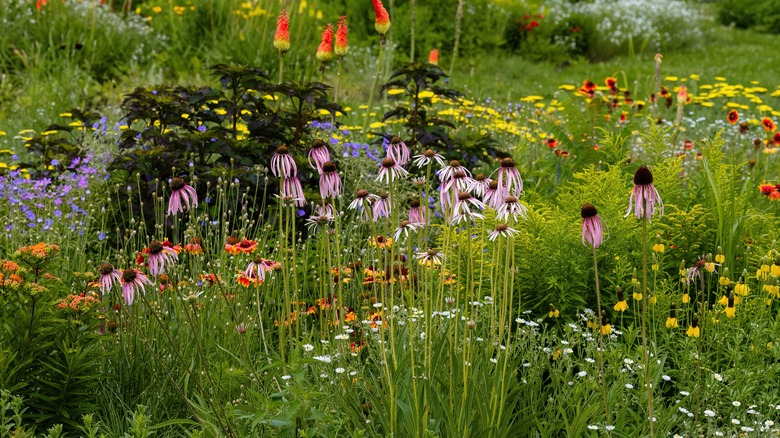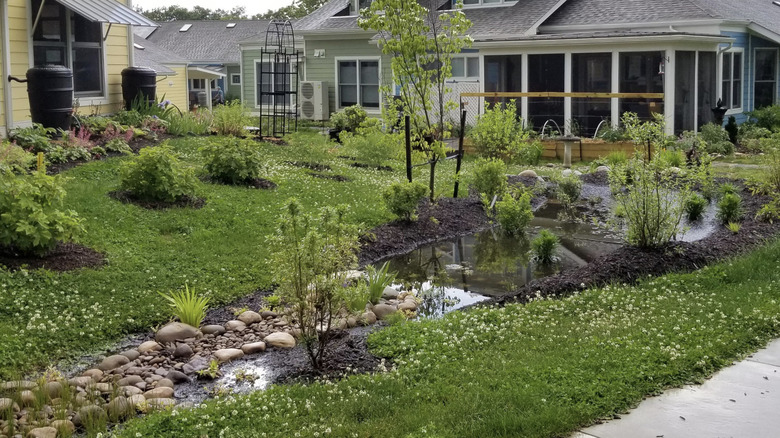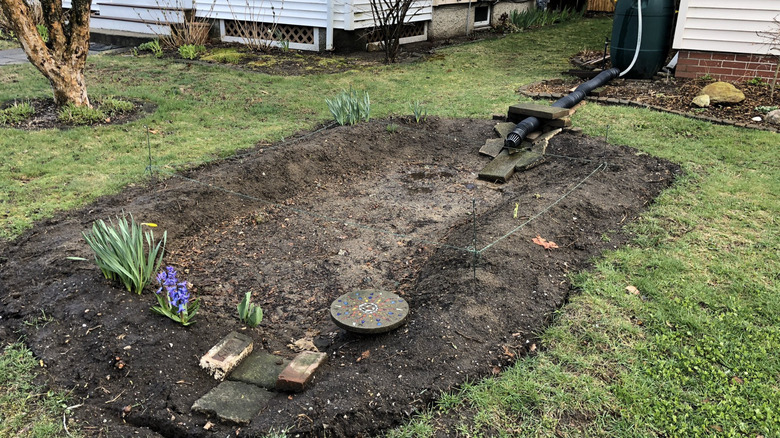What Is A Rain Garden, And Should You Consider Planting One?
Nothing is worse than needing rain and then having a bunch of storms finally roll through only to leave your yard full of standing water. Standing water is not a good thing — it can kill your grass and become a breeding ground for mosquitoes, neither of which are very desirable outcomes. Usually, water pooling problems are caused by poor drainage (which can be removed by dethatching and aerating your lawn) and uneven land with dips that collect water (which luckily can be fixed without heavy machinery). However, the easiest way to manage water drainage and standing water issues in your yard is also the most environmentally friendly — and it involves creating a rain garden.
Rain gardens are low-maintenance plots that are planted in low-lying areas of a yard in order to capture water and pull it into the soil. They normally contain pollinator-friendly native plants like wild grasses and flowers because they have deeper roots than non-native ornamental plants like turf grass. For this reason, they are better able to absorb water instead of allowing it to pool and sit on the surface.
The benefits of starting a rain garden
Even if you don't have problems with standing water, building a rain garden has other advantages for both your yard and the larger ecosystem. Firstly, because they contain native plants, they're beneficial to important pollinators like dragonflies, hummingbirds, songbirds, and butterflies. This means your rain garden can become a thriving space for wildlife and help attract a larger variety of interesting birds and pollinators to your yard.
On top of this, rain gardens are an important way to help protect your local creeks and water systems. After a storm, the runoff from your yard and driveway picks up dirt, debris, and sometimes chemical pollutants and carries them downhill to the nearest waterway. Having a rain garden that is filled with native plants stops that overflow from happening by trapping the water in the garden and using the soil and plant roots to filter and clean the liquid as it's pulled deep underground. Eventually, it makes its way back into the water table. This process also prevents flooding because it stops all the aqua from a heavy rain from flowing into its channels all at once.
How to make your own rain garden
The first step in making a rain garden is selecting the right location. It's easiest to choose an area that's already lower than the rest of your yard and tends to collect water. However, you'll also want to make sure the rain garden is at least 10 feet from your house and away from any utility lines, septic tanks, and tree roots. Typically, it should be about 20% of the size of the roof, patio, or driveway that is draining into it. Furthermore, rain gardens should be longer than they are wide, with the long side perpendicular to the water's path so that it captures as much runoff as possible.
Once you've examined your yard during a rainstorm and found the perfect place, it's time to dig your garden and choose your plants. For this step, you'll have to do some research on what native species are most common in your area, as well as which ones thrive best in full sun versus partial shade (depending on where your garden is). It's a good idea to plant a mixture of perennials, shrubs, and wildflowers. Luckily, because they're full of native plants, rain gardens don't need much care besides some weeding and watering during the first year. After that, you can sit back and enjoy helping the environment while attracting pollinators at the same time.


